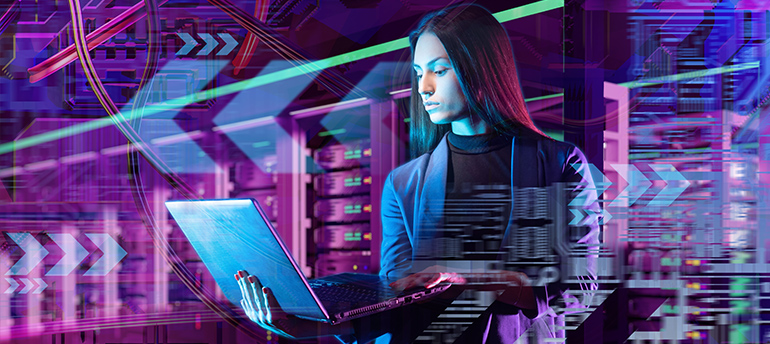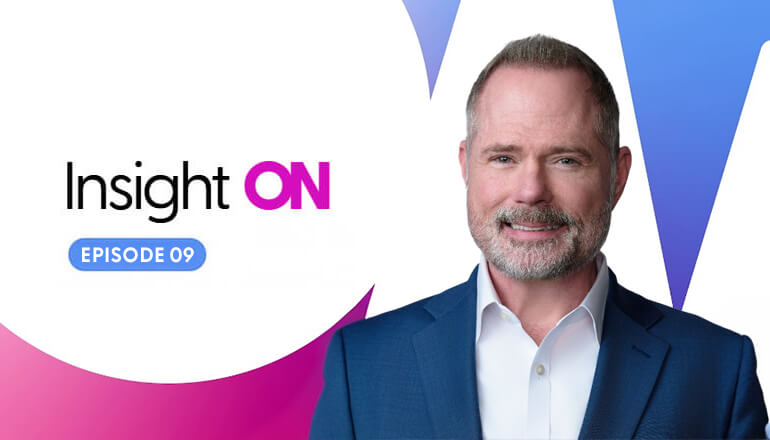Article Windows 10 Switch Cannot Be Delayed Any Longer

By Insight UK / 2 Dec 2019 / Topics: Cloud Cybersecurity
On January, 14 2020, Microsoft will end support for Windows 7. This means the operating system will no longer receive security updates and technical assistance and automatic updates will also be unavailable.
This leaves organisations running Windows 7 systems with a choice. They can persevere with an aging, insecure operating system that
exposes businesses to security threats, or migrate to a more advanced platform that can facilitate digital transformation
Windows 7 is now a decade old and the worlds of IT and business have advanced significantly since. An organisation’s operating system should reflect those changes.
Windows 10 Enhancements
Windows 10 is a modern operating system, capable of running on a wide range of devices, including PCs, tablets and all-in-one devices. This gives small businesses a wide range to choose from – enabling entirely new ways of working.
There are usability enhancements such as live tiles and new style Windows applications, as well as support for 3D graphics. Multiple inputs, such as voice and touch, allow for more natural interactions and handwritten notes alongside the trusty mouse and keyboard.
An added degree of intelligence is enabled by the inclusion of Cortana, Microsoft’s personal assistant. It listens to and answers questions in normal, everyday language and learns more about a user over time – automating tasks and helping employees to get more done during the workday.
Windows 10 devices are significantly more powerful than aging hardware. Windows 10 delivers two and a half times the performance, three times the battery life and 30 times the graphics performance than older operating systems. This boost in power results in more rapid wake up and boot times and the ability to handle more applications simultaneously.
Windows 10 doesn’t just offer a significant productivity dividend; it also offers more efficient maintenance. Research suggests that PCs older than four years cost more to maintain and require more frequent repairs than newer systems. SMBs might think postponing a hardware refresh can save money, but delayed action can actually increase operating costs.
Security Provisions
The absence of ongoing support means SMBs are exposing themselves to unacceptable risk as any vulnerabilities discovered or exploited by attackers will not be patched by Microsoft.
An organisation’s most important asset is data and it must be protected. A cyberattack can result in a loss of productivity and data loss. The consequences of a breach can include lost revenue, financial penalties, and significant reputational damage.
Windows 10 offers more than just frequent updates as it’s a more secure platform by nature. It has built in defences, such as Windows Defender Antivirus, that repel threats. It enables biometric security features like Windows Hello which allows users to log-in using their fingerprint or face.
Some Windows 10 Pro devices also have security built in at a hardware level, such as Unified Extensible Firmware Interface (UEFI) and Early Load Anti-Malware (ELAM). This means that only safe, certified software can start during the hardware process.
What are the Next Steps?
You may have heard that Microsoft is offering extended support for Windows 7 and you’d be right. But this support is a paid service and is restricted to customers with Volume Licensing, making it unsuitable for SMBs. In any case, this would only be delaying the inevitable.
One way to make the jump is a hardware refresh, as a more modern PC delivers significant performance gains, driving productivity. But a refresh can be costly and capital intensive. The use of Device-as-a-Service (DaaS) can aid cost predictability as it involves a subscription rather than an up-front cost and can help SMBs move to an OpEx model. DaaS usually includes provisions for third-party maintenance and support.
In some instances, a refresh isn’t an option. For example, an organisation might want to maximise investment in a specialist piece of hardware such as a digital display. In this scenario, organisations should ensure equipment is compatible with Windows 10 before purchasing a licence.
In all cases, however, it is essential that key applications are tested for Windows 10 compatibility before migration takes place.
With support for Office 2010 also ending next year, it might be time to consider Microsoft 365, a subscription service that combines Windows 10 Enterprise, Office 365 and additional security features.
The combination of a modern operating system, cloud-based productivity applications, and enterprise mobility management enables entirely new ways of working and connected workforce initiatives. Benefits include enhanced collaboration, increased productivity and higher employee satisfaction.
When Windows 7 arrived, it was a breath of fresh air. It was more usable and stable than Windows Vista and for the first time offered organisations a path to move away from the aging Windows XP. Windows 10 is a similarly significant upgrade, allowing devices, users and organisations to fulfil their digital potential. The productivity and security implications of failing to act are too great.



